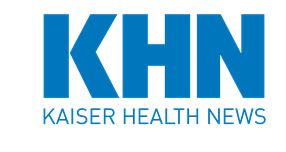
Suicide is a serious public health issue that affects individuals, families, and communities across the nation. Fortunately, we know that suicide can be prevented. To help states and communities plan and prioritize suicide prevention activities, CDC’s National Center for Injury Prevention and Control is releasing the Suicide Prevention Resource for Action (Suicide Prevention Resource). The Suicide Prevention Resource was previously known as Preventing Suicide: A Technical Package of Policy, Programs, and Practices. It is now updated, expanded, and renamed and includes strategies with the best available evidence to make an impact on saving lives. Strategies include those that prevent risk for suicide in the first place and those to lessen the immediate and long-term harms of suicidal behavior for individuals, families, and communities.
The Suicide Prevention Resource has three components:
- Strategies are the collection of actions to achieve the goal of preventing suicide.
- Approaches are the specific ways to advance each strategy.
- Policies, programs, and practices show evidence of impact on suicide, suicide attempts, or risk and protective factors.
States and communities can use the Suicide Prevention Resource to prioritize and tailor activities that are most likely to reduce suicide.
The new Suicide Prevention Resource provides a roadmap for action under CDC’s Comprehensive Suicide Prevention program. This program currently funds 15 states and 2 universities to implement and evaluate a comprehensive public health approach to suicide prevention. These funded programs use strategies from CDC’s new Suicide Prevention Resource to focus on activities with the greatest potential to prevent suicide among populations that are disproportionately impacted by suicide. CDC recently published Program Profiles and success stories to show how these funded programs have implemented and evaluated a comprehensive public health approach to suicide prevention.
Suicide is an urgent public health crisis in the United States. Despite a decrease in suicide rates in 2020 compared to 2019, nearly 46,000 lives were lost to suicide. Provisional 2021 data are showing that suicide is once again increasing, with more than 48,000 people dying by suicide. Further, every year, millions of people think about, make a plan, and attempt suicide. Suicide has devastating consequences on individuals, families, schools, workplaces, and entire communities. Importantly, we know there is no single cause of suicide. Factors increasing suicide risk occur at the individual, relationship, community, and societal levels. These include job/financial, health, criminal/legal, and relationship problems. Substance use, loss of a friend or loved one to suicide, a history of suicide attempts, and mental health concerns may also increase a person’s risk for suicide.
We can all #BeThere to prevent suicide by taking actions that can promote healing and help and give hope. Many people find it difficult to talk about suicide and especially difficult to know how to talk to someone that is having thoughts of suicide. But there are clear actions that we can take. We can all learn the five steps for how to talk to someone who might be suicidal.
In addition to what we can each do individually, CDC’s comprehensive public health approach to suicide prevention helps address the range of risk factors. You can read more about CDC’s suicide prevention strategies, access and download the Suicide Prevention Resource, access and download the Suicide Prevention Resource summary, and read the CSP Program Profiles.
Learn more:
- Suicide Prevention
- Suicide Prevention Resource for Action
- Suicide Prevention Resource for Action Summary
- Comprehensive Suicide Prevention
- Comprehensive Suicide Prevention Program Profiles
- Prevention Strategies
- Suicide Prevention Strategic Plan
If you or someone you know is thinking about suicide, please contact the 988 Suicide and Crisis Lifeline, call or text 988, or chat at 988lifeline.org. Connect with a trained crisis counselor. 988 is confidential, free, and available 24/7/365. Visit the 988 Suicide and Crisis Lifeline for more information at 988lifeline.org. |



